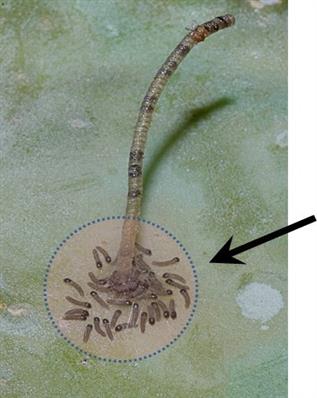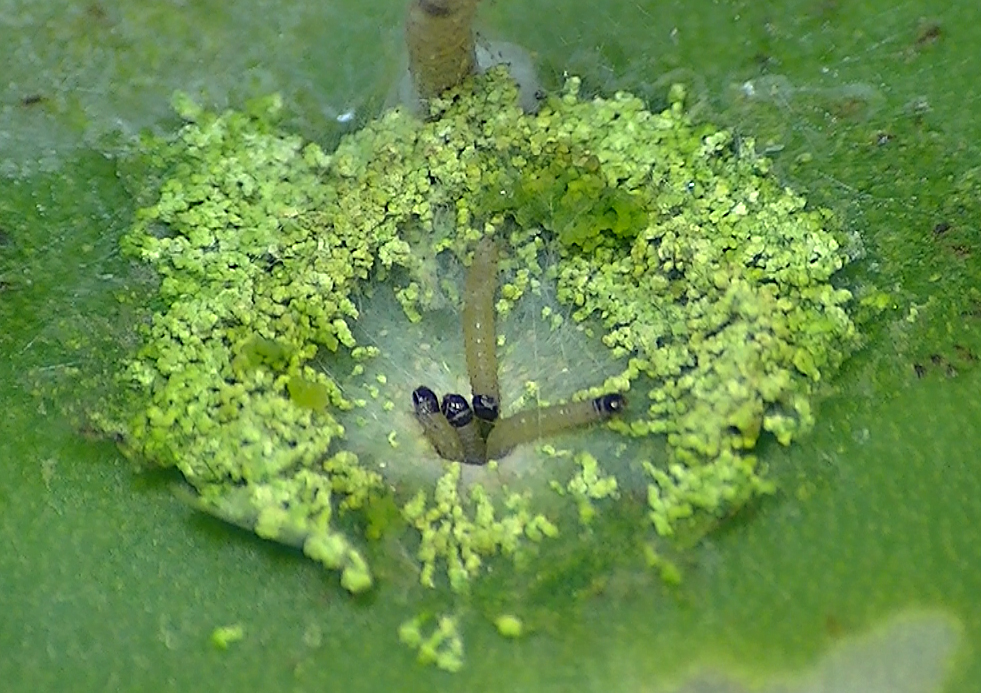A newly oviposited egg stick attached to a cactus glochid thorn.
Once the whole colony is inside the cactus, the larvae collectively mine the plant. The non-digested material that passes through their guts as they feed is defecated to the outside in a ring-shaped pile that surrounds the base of the egg stick. (Time-lapse video)
Oviposition and the Collective behavior of the Newly Hatched Caterpillars
The moth lays her eggs in the form of an elongated egg stick consisting of 50 or more eggs arranged one on top of another.
Time lapse video of egg hatch, aggregation, and the collective excavation of the cactus cladode. When an egg hatches, the neonate climbs down the egg stick to join its siblings at the base. Excavation does not typically begin until a third of more of the eggs have hatched . In this instance, 26 hours elapsed between the hatching of the first egg and the initiation of excavation. The flashing numbers in the lower left are hours elapsed since the first egg hatched.
These color-coded caterpillar were part of an observation study to determine the extent to which small groups of caterpillars share the task of penetrating the tough cuticle of the cactus cladode. (Time lapse video)
The Cactus Caterpillar Cactoblastis cactorum (Pyralidae)



